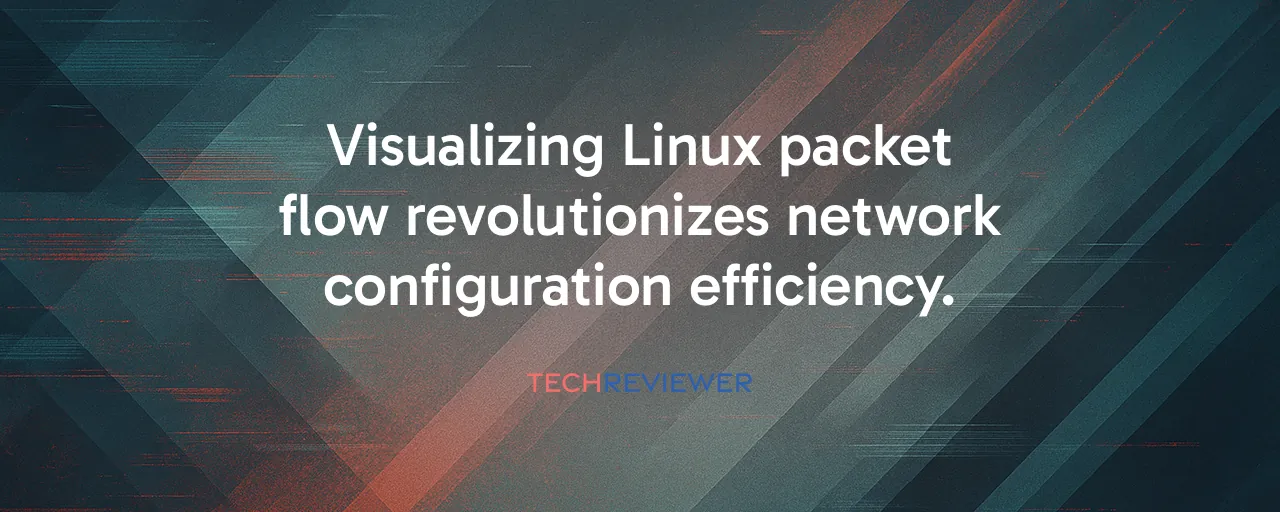Untangling the Packet Maze
Configuring Linux networking tools like iptables can feel like wrestling a puzzle with missing pieces. For years, system administrators have pored over dense manuals and blog posts, only to watch their carefully crafted rules fail in unpredictable ways. The problem often boils down to one thing: not understanding how packets actually flow through the Linux kernel. A single diagram, like the Linux Network Stack visualization published on Zenodo in October 2024, can change everything. It maps the journey of a packet from the network interface card through layers like Netfilter hooks, NAPI polling, and traffic control subsystems, making sense of the chaos.
This clarity isn't just about iptables. Tools like nftables, eBPF, and XDP, which are reshaping modern networking, demand a deep grasp of the kernel's architecture. Without it, even seasoned DevOps engineers can spend hours debugging why a firewall rule drops legitimate traffic or why a container's network namespace isn't behaving. The diagram's power lies in showing exactly where rules apply, where optimizations like TCP Segmentation Offload kick in, and how features like network namespaces isolate container traffic. It's a roadmap that turns trial-and-error into precision.
Real-World Wins From Clear Insights
Take a major cloud provider's experience with eBPF-based load balancing. Handling hundreds of millions of requests per second, their engineers leaned on eBPF to process packets at lightning speed, achieving 14 million packets per second on commodity hardware. But without a clear view of the kernel's packet flow, their initial setups were clunky, riddled with inefficiencies. Once they adopted detailed packet flow diagrams, configuration became a breeze. They fine-tuned their eBPF programs to leverage XDP's early hook, slashing latency and boosting throughput. The lesson? Clear visuals let engineers align tools with the kernel's actual behavior, unlocking massive performance gains.
Contrast that with a telecommunications provider optimizing bandwidth with the traffic control subsystem. Using hierarchical token bucket and CoDel queuing disciplines, they aimed to meet strict service level agreements. Early attempts were messy, with misconfigured rules causing bufferbloat and uneven bandwidth allocation. A comprehensive diagram clarified where traffic control fits in the packet path, enabling precise tuning. The result was smoother traffic flow and happier customers. These cases show that understanding the kernel's flow directly impacts real-world reliability and efficiency.
The Broader Impact of Better Documentation
Clear documentation not only helps individual admins but also streamlines entire workflows for teams. System administrators, who once spent days troubleshooting connectivity issues, can now pinpoint where packets are dropped using Netfilter's five hook points (prerouting, input, forward, output, postrouting). Kernel developers working on eBPF or XDP can design programs that integrate seamlessly with the stack, knowing exactly where their code hooks in. Even hardware vendors, like those behind Nvidia's ConnectX-7 NIC, benefit by aligning their offload features, such as checksum offload or Generic Receive Offload with the kernel's architecture, which boosts throughput by 60%.
But it's not all smooth sailing. The Linux networking stack's complexity creates a steep learning curve. eBPF's verifier, for instance, restricts program complexity to ensure kernel stability, frustrating developers who want more flexibility. Not all network interface cards support XDP, forcing reliance on slower generic implementations. Still, clear visualizations bridge these gaps, making advanced tools accessible to more than just the kernel elite. They empower everyone from cloud engineers to security researchers to build better, faster, and more secure networks.
Why Visuals Are the Future of Networking
The Linux networking stack has grown organically over decades, from Netfilter's debut in the 2.4 kernel to eBPF's rise in 2014. Each leap, like NAPI's polling to cut interrupt overhead or network namespaces enabling Docker's container boom, added complexity. Comprehensive diagrams cut through that fog, offering a single source of truth for packet flow. They are tools for today and critical for tomorrow's innovations. As 100 Gigabit Ethernet becomes standard and SmartNICs handle more protocol processing, understanding the stack's intricacies will only grow more vital.
The community's response on platforms like Hacker News in October 2025 shows the hunger for such clarity. Admins shared stories of years-long iptables struggles dissolving after studying packet flow visuals. Looking ahead, as eBPF and XDP expand programmability and AI-driven traffic optimization emerges, clear documentation will be the backbone of progress. It's about giving everyone, including admins, developers, and vendors, a shared language to harness Linux networking's full potential, from data centers to home Wi-Fi.
